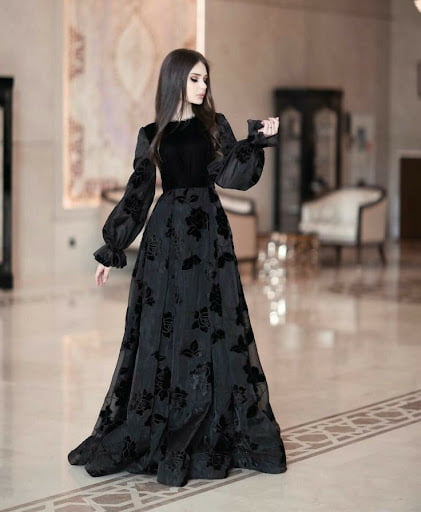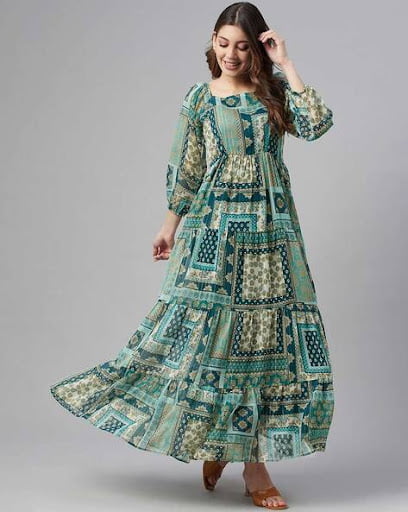Table of Contents
More and more often the combination of “fashion and design” is recalled as a symbol of Italians in the world, to connote a universe of products that represent Made in Italy as a whole. However, for those who work in one or the other sector, it is difficult to think of these two worlds as part of a single product and above all “cultural” panorama.
Culture, fashion, and identity are interconnected aspects of human existence that shape and define individuals and communities. Culture serves as the foundation for societal norms, beliefs, and values, while fashion acts as a medium of expression and a reflection of cultural trends. Identity, on the other hand, is the amalgamation of personal and cultural characteristics that individuals use to perceive themselves and to be perceived by others. We will explores the multifaceted relationship between culture, fashion, and identity, emphasizing how they influence and shape one another.
The culture of everyday life
At the base of the success of the made-in-Italy fashion product, is above all a peculiar “consumer culture”, which represents a first element of similarity with the universe of design products in general.
In the Italian social context, the “culture of living” represents a primary value, achieved through the search for quality in everyday life, lived in the relationship spaces of the family or social group, often restricted to the local community. Furniture, accessories, fabrics, clothes, and even traditional food products, become the mediums of this culture. The confined space, first of the home and then of work and free time, is the theater of design experimentation because it represents the primary expression of a way of life and of the values linked to it.
The entrepreneurial culture
For those who work in the design field, the idea that design skills are combined with managerial skills and above all entrepreneurial initiatives is very common. The entrepreneurial designers who gave life to historic design companies are known to all2: the most recent Milanese history is full of stories of companies that have grown thanks to the tenacious and creative collaboration of “enlightened” entrepreneurs and designers who jointly contributed to creating products that today they are known all over the world.
When it comes to fashion, it is much less common to think of this same character of the strong relationship between design and industry, between design and management. The names of the “stylists”, which have become brands of the product lines are considered a symbol of creativity and flair in the artistic sense, obscuring instead the fundamental ability, expressed by Italian fashion designers, to integrate and build indissoluble relationships with the production reality
The local productive culture
Between the end of the 70s and the beginning of the 80s, Italian prête-à-porter conquered world leadership to the detriment of French haute couture and soon Paris, the undisputed fashion capital since the end of the nineteenth century subtract its primacy from Milan4.
The fashion sector, born, especially in France, as an artistic expression of great tailors through artisanal production techniques, becomes a fully industrial sector in Italy, as it had already happened in the United States in the 1950s, although it is characterized in a different way.
In the 60s and 70s, the changes taking place in the social context and the critique of status expression products, pomp, and ostentation, led consumers to prefer more accessible and contemporary clothes.
Culture as a Foundation for Fashion and Identity
Culture serves as a fundamental influence on both fashion and identity. Every society has its own unique cultural traits, including language, customs, traditions, and aesthetics. These cultural elements provide a framework for fashion choices and individual identities. For instance, traditional attire often carries symbolic meaning, representing historical events or religious beliefs, and becomes an essential part of cultural identity. Similarly, cultural values and societal norms shape the development of personal identity, affecting the choices individuals make in fashion.
Fashion as a Reflection of Cultural Identity
Fashion acts as a visual language through which individuals can express their cultural identity. Clothing styles, accessories, and grooming practices can signify membership to a particular cultural group or subculture. Traditional garments, such as kimono in Japan or saris in India, not only showcase the cultural heritage but also foster a sense of pride and belonging among individuals. Fashion also serves as a tool for cultural preservation, as it allows communities to showcase and transmit their traditions to future generations.
Furthermore, fashion trends often emerge from specific cultural influences. Globalization has facilitated the spread of fashion across borders, leading to cultural fusion and the creation of new styles. For instance, the rise of hip-hop culture in the United States has influenced fashion trends worldwide, with streetwear becoming a prominent style among youth. The adoption of such styles signifies a cultural affinity or appreciation for a particular community’s identity and values.
Fashion as a Tool for Identity Exploration and Expression
Fashion offers individuals the opportunity to explore and experiment with different aspects of their identity. Personal style choices, such as clothing, hairstyles, and accessories, allow individuals to communicate their personalities, preferences, and values to the world. Through fashion, individuals can convey their cultural affiliations, express their gender identity, challenge societal norms, or showcase their creativity.
Fashion also plays a pivotal role in self-presentation and self-perception. The clothes individuals choose to wear often shape how they are perceived by others and can influence their self-confidence and self-esteem. Fashion has the power to empower individuals by allowing them to embody their true selves and challenge societal expectations. By embracing unique styles or subcultures, individuals can find a sense of belonging and create communities based on shared fashion choices and identities.
The Influence of Identity on Fashion Trends
While culture provides a foundation for fashion, personal identities also shape and influence fashion trends. Individual identities are multifaceted and can encompass various aspects, such as gender, ethnicity, sexuality, profession, and personal interests. Each of these identities can influence an individual’s fashion choices and contribute to the diversification of fashion trends.
For example, the LGBTQ+ community has played a significant role in shaping fashion and challenging traditional gender norms. The rise of gender-neutral fashion and the inclusion of non-binary models on runways reflect the changing perceptions of gender identity and the demand for more inclusive fashion. Similarly, subcultures like punk, goth, or hip-hop have influenced fashion trends by providing alternative styles that reject mainstream norms and assert unique identities.
The Impact of Fashion on Cultural Identity
Fashion’s influence on cultural identity extends beyond individual expression to shaping collective identities. Fashion trends can impact cultural perceptions, social norms, and cultural practices. For instance, the emergence of modest fashion has gained prominence in recent years, influencing cultural practices in societies with conservative traditions. It has challenged the notion that fashion and modesty are mutually exclusive, creating a new cultural narrative that embraces both.
Moreover, fashion has the power to challenge stereotypes and create a more inclusive society. When fashion celebrates diversity and represents different cultures and body types, it promotes cultural understanding, acceptance, and unity. This representation not only strengthens cultural identity but also encourages individuals to embrace their own unique identities.
Fashion as a Vehicle for Cultural Appropriation
While fashion has the ability to celebrate cultural diversity and promote cultural understanding, it is important to acknowledge the issue of cultural appropriation within the industry. Cultural appropriation refers to the adoption or borrowing of elements from a marginalized culture by members of a dominant culture, often without understanding or respecting the cultural significance behind those elements. This appropriation can perpetuate stereotypes, commodify cultural traditions, and disregard the voices and experiences of the marginalized communities.
The Negative Impacts of Cultural Appropriation in Fashion
Cultural appropriation in fashion can have detrimental effects on cultural identity. When elements of a culture are taken out of their original context and used for fashion purposes, it can trivialize and devalue their cultural significance. This can lead to the erasure of the history, meaning, and symbolism behind those elements, contributing to the commodification and commercialization of cultural traditions.
Moreover, cultural appropriation in fashion can reinforce stereotypes and perpetuate cultural insensitivity. When individuals from dominant cultures adopt and wear cultural attire or accessories without understanding their significance, it can reduce those symbols to mere fashion trends, disregarding their cultural and historical importance. This can perpetuate harmful stereotypes and misrepresentations of marginalized communities, reinforcing power imbalances and cultural inequalities.
Promoting Cultural Appreciation and Collaboration in Fashion
Instead of cultural appropriation, the fashion industry should focus on promoting cultural appreciation and collaboration. This involves acknowledging and respecting the cultural origins of fashion elements, engaging in meaningful dialogue with the communities from which they are derived, and giving credit where credit is due. Collaborations between designers and artisans from different cultures can lead to the creation of innovative and respectful fashion pieces that celebrate cultural diversity without appropriating it.
Education and awareness are crucial in combating cultural appropriation in fashion. By providing information about the cultural significance of certain elements and the importance of respecting cultural boundaries, individuals can make more informed fashion choices and appreciate the richness and diversity of various cultures. Fashion brands and influencers also have a responsibility to engage in responsible marketing and representation, ensuring that cultural symbols are not reduced to mere fashion trends but are presented in their proper context.
The Influence of Fashion on Gender Identity
Fashion plays a significant role in the construction and expression of gender identity. Traditionally, clothing has been associated with specific gender roles and expectations, reinforcing binary notions of masculinity and femininity. However, in recent years, there has been a growing movement towards gender-neutral fashion and the rejection of rigid gender norms.
Gender-neutral Fashion: Challenging Traditional Gender Roles
Gender-neutral fashion challenges the notion that clothing should be confined to specific gender categories. It allows individuals to express their identity beyond traditional notions of masculinity and femininity. Gender-neutral clothing often features simple silhouettes, minimalistic designs, and a focus on comfort and versatility. This fashion movement not only provides more options for individuals who do not conform to binary gender identities but also challenges societal norms and promotes inclusivity.
The Rise of Gender-inclusive Fashion
Fashion has also witnessed the rise of gender-inclusive designs that cater to a wide range of gender identities. This includes clothing lines that feature gender-fluid or androgynous styles, as well as brands that offer a broader range of sizes and fits to accommodate diverse body types. By offering more inclusive options, fashion has the potential to empower individuals to embrace their authentic selves, regardless of societal expectations or gender norms.
Fashion as a Tool for Self-Expression and Empowerment
Fashion allows individuals to use clothing as a means of self-expression, empowering them to communicate their gender identities and challenge societal expectations. By selecting clothing styles, colors, and accessories that align with their personal preferences and identities, individuals can assert their autonomy and create a visual representation of who they are. This self-expression through fashion can contribute to a greater sense of self-confidence, self-acceptance, and overall well-being.
The Impact of Technology on Fashion and Cultural Identity
The advent of technology and the rise of social media platforms have significantly influenced the way fashion and cultural identity intersect in the digital age. The digital realm has become a space for individuals to showcase their personal style, explore global fashion trends, and connect with like-minded communities from around the world. This has led to both positive and negative impacts on cultural identity within the fashion landscape.
The Influence of Social Media on Fashion and Cultural Identity
Social media platforms, such as Instagram, TikTok, and Pinterest, have become powerful tools for fashion inspiration, trendsetting, and self-presentation. Influencers and content creators have emerged as key figures who shape fashion trends and contribute to the development of cultural identities. Through curated images, videos, and narratives, individuals can express their cultural affiliations, share their unique fashion perspectives, and find communities that resonate with their identities.
Moreover, social media has facilitated the democratization of fashion, allowing individuals from diverse cultural backgrounds to have a platform for self-expression and representation. Previously underrepresented or marginalized voices now have the opportunity to showcase their cultural heritage, challenge mainstream beauty standards, and redefine fashion norms. This has contributed to a more inclusive and diverse fashion landscape, where cultural identities are celebrated and embraced.
The Challenges of Digital Fashion and Cultural Appropriation
However, the digital age has also brought challenges related to cultural appropriation in fashion. The ease of access to different cultures and fashion styles can sometimes lead to the misappropriation and commodification of cultural elements without proper understanding or respect. In the digital realm, cultural symbols and aesthetics can be easily taken out of their original context, leading to their dilution or misrepresentation.
Additionally, the pressure for constant content creation and the pursuit of viral trends in the digital space can lead to the erasure of individual cultural identities in favor of homogenized and marketable fashion aesthetics. The desire for social media validation and engagement may incentivize individuals to adopt fashion styles that are popular but not necessarily reflective of their authentic cultural identities. This can contribute to the loss of cultural diversity and reinforce the dominance of mainstream fashion norms.
Encouraging Responsible Digital Fashion Practices
To mitigate the negative impacts of the digital age on fashion and cultural identity, it is crucial to encourage responsible digital fashion practices. This includes promoting cultural sensitivity, fostering respectful dialogue, and raising awareness about the importance of understanding and acknowledging the cultural significance behind fashion choices. Brands, influencers, and consumers have a shared responsibility to engage in ethical fashion practices, including proper credit attribution, collaboration with diverse communities, and the avoidance of cultural stereotypes or caricatures.
Moreover, the digital space should be leveraged as a platform for cultural exchange, learning, and celebration. By amplifying diverse voices, highlighting cultural traditions, and fostering cross-cultural collaborations, the digital fashion landscape can become a powerful tool for promoting cultural appreciation, understanding, and the preservation of cultural identities.
Summary
One thinks that the distance that is still sometimes perceived as more like a desired distance, a sort of perceived cultural “diversity”. However, precisely in terms of the culture of use, entrepreneurship, and production – the points of contact between fashion and design are undeniable, and, above all, the potential advantages of working in synergy appear to be considerable. Having a common front on the level of international competitiveness, while maintaining firm values of research of quality and innovation, today seems an imperative capable of overcoming the last resistance of “caste”.
Culture, fashion, and identity are intertwined aspects of human existence. Culture provides a foundation for fashion choices and personal identity, while fashion acts as a medium for self-expression, cultural preservation, and identity exploration. Both culture and personal identities influence fashion trends, and fashion, in turn, shapes cultural perceptions and practices. Understanding the dynamic relationship between culture, fashion, and identity helps us appreciate the power of fashion as a tool for individual and collective expression, fostering inclusivity and cultural understanding in a diverse world.


